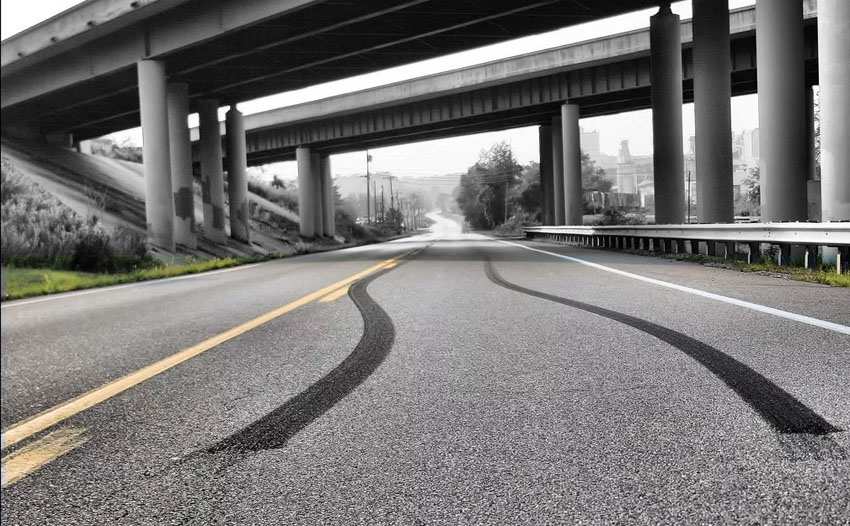If you drive a modern car, one produced in the past few years, chances are that the advice you’ve been given to correct a skid is now wrong and might even be dangerous. The Road Code has been updated to mention ABS, but not other modern technologies such as brake assist, electronic brake force distribution or electronic stability control. The original advice, which still applies to older vehicles, is:
- If your vehicle oversteers (i.e. the rear of the car swings out), lift off the accelerator and turn into the skid
- If your vehicle understeers (i.e. the front of the car doesn’t turn and instead the wheels slid straight ahead) lift off the brake or accelerator (whichever one is causing the issue), and straighten up the wheels slightly until grip is regained
- If your vehicle’s wheels lock up, reduce braking pressure until the skid stops. 'Pump' the brakes.
You can use ‘cadence braking’ where you pump the brake to simulate ABS, or ‘threshold braking’ where you keep the amount of tire slippage to a minimum. In either case, the situation is likely to preclude you thinking about what you are doing, and unless you have practiced cadence or threshold braking, it will most likely not be of benefit to you. Unless you are deliberately looking to purchase a classic car, the chances of you buying a vehicle that is not equipped with at least ABS is diminishing daily.
How to deal with skids in an ABS equipped vehicle
With ABS you can brake as hard as you like, but your wheels won’t lock. This won’t stop you from skidding if you have turned too sharply, but it does mean that you can brake and retain more control of the vehicle. The advice regarding oversteering and understeering is still applicable. In an emergency, keep the brake pedal depressed as far as it will go, as long as you want to continue braking.
Electronic stability control-equipped vehicles
In vehicles with ESP or ESC (electronic stability control) it can be almost impossible to get the car to skid unless you are being really reckless. If you do need to brake hard, or if the vehicle starts sliding, keep the brake fully depressed and steer where you want to go. That might not be into the skid. I have tried an ESC-equipped car in a controlled situation (coned chicane on a wetted area of Taupo racetrack at 90kph using a Subaru Legacy) and it was impossible to get the car sideways. The ESC kicked in and within moments had brought the car back under control. ESC will always try to correct the vehicle towards the direction the front wheels are pointing.
The dangerous situation here is that if you feel the car start to slide and you correct it as ESC kicks in, for example, you turn into an oversteer skid, then you could end up steering off the road as the ESC fights to direct your car where you are pointing the wheels. This is why with ESC it’s important you always steer towards where you want to go.
Additional braking assistance
Brake assist is a technology that gives you maximum braking power more quickly if the vehicle detects you are in an emergency situation. Electronic brake force distribution uses the ABS and ESC to apply the maximum braking power that each individual wheel is capable of. Older braking systems apply the same relative power to each wheel, but if one wheel is on a slippery surface such as gravel or wet grass, this will lock first. EBD will reduce the braking power on wheels that don’t have as much friction so that they don’t lock and skid.
What will the future be like?
In the future we will see less and less skid marks on the road. Vehicle technology will continue to improve, including technology that anticipates danger ahead and automatically slows the vehicle. Tire technology will also continue to improve, giving us tires that displace surface water better and also provide better traction on both wet and dry surfaces.
